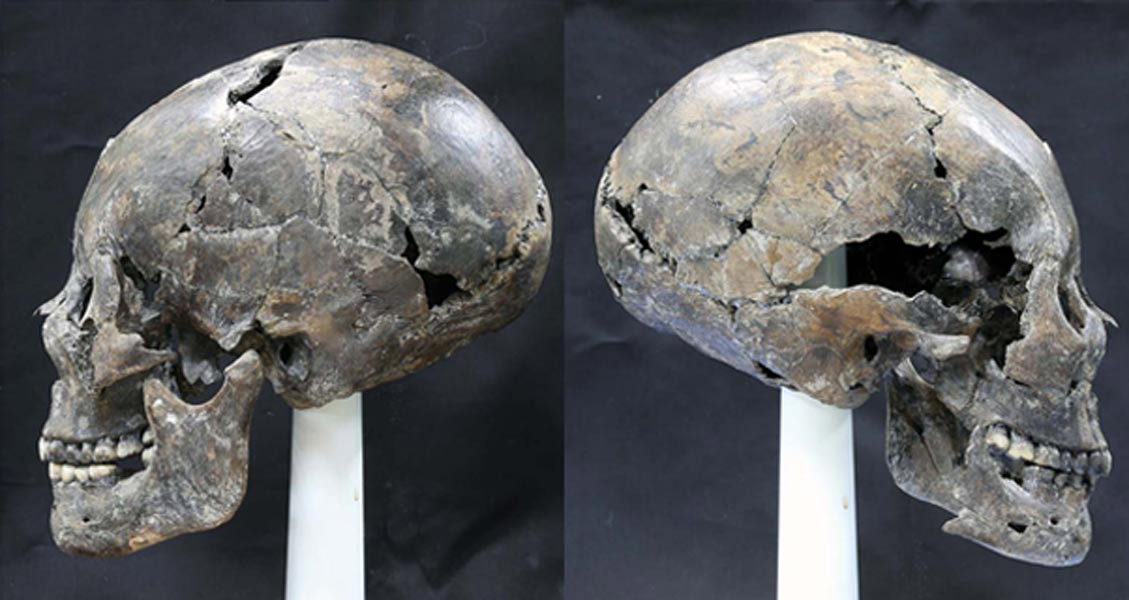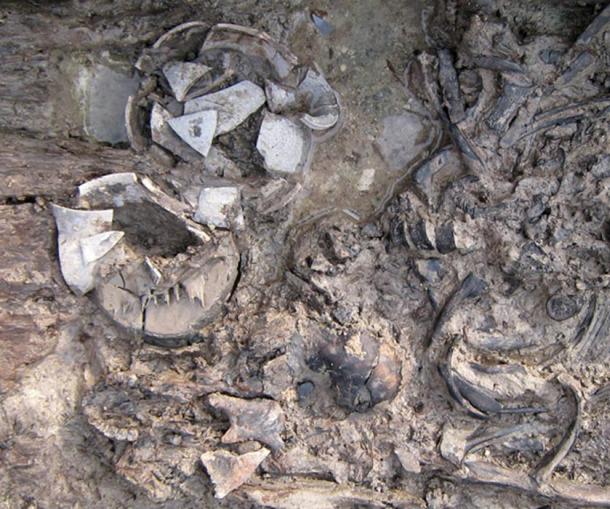Guest
Guest
 |  Subject: Bizarre Alien-Like Skull Unearthed in Korea was Naturally Formed Subject: Bizarre Alien-Like Skull Unearthed in Korea was Naturally Formed  Tue Jun 21, 2016 9:48 pm Tue Jun 21, 2016 9:48 pm | |
|  21 JUNE, 2016 - 21:07 APRILHOLLOWAYBizarre Alien-Like Skull Unearthed in Korea was Naturally Formed(Read the article on one page)Archaeologists have unearthed an elongated skull in a grave belonging to the ancient Silla culture of Korea, which experts say was NOT deliberately flattened through the practice of cranial deformation.The skull was found in the grave of a woman near Gyeongju, which was once the historical capital of the Silla Kingdom that reigned over most of the Korean peninsula for nearly 1,000 years from 57 B.C. to A.D. 935. 21 JUNE, 2016 - 21:07 APRILHOLLOWAYBizarre Alien-Like Skull Unearthed in Korea was Naturally Formed(Read the article on one page)Archaeologists have unearthed an elongated skull in a grave belonging to the ancient Silla culture of Korea, which experts say was NOT deliberately flattened through the practice of cranial deformation.The skull was found in the grave of a woman near Gyeongju, which was once the historical capital of the Silla Kingdom that reigned over most of the Korean peninsula for nearly 1,000 years from 57 B.C. to A.D. 935. A close-up of the upper portion of the body, co-mingled with other artifacts found in the tomb. Credit: Lee et al., published under a Creative Commons License. The remains of the woman, who was in her late 30s, were found inside a mokgwakmyo, a traditional wooden coffin. Although her skeleton was relatively well-preserved, her skull was in fragments and had to be painstakingly pieced together by the team of researchers. When it was fully assembled, the scientists were surprised to find that it was abnormally long - her head width was less than about 75 percent of its length, according to a new report published in the 1 June edition of PLOS ONE. - Quote :
- “The long and narrow cranium and narrower facial shape of the individual in this study should be regarded as an idiosyncratic characteristic of the skull and not a typical feature of East Asians in general or of Koreans in particular,” reported the study authors. “According to a cephalometric analysis, the cephalic index (CI) of the individual was 73.5, which suggests the dolichocephalic trait (long-headedness). This, as compared with similar demographic groups of the era, is unusual.”
- Elongated Skulls in utero: A Farewell to the Artificial Cranial Deformation Paradigm?
- The World-wide Mysterious Phenomena of Elongated Skulls
- The 13 Alien-Like Skulls Found in Mexico
The skeleton inside the mokgwakmyo. Credit: Lee et al., published under a Creative Commons License. The scientific team examined the skull for signs of deliberate head flattening, otherwise called cranial deformation, in which the skull is compressed between two wooden boards, or tightly bound with fabric from childhood. The earliest examples of cranial deformation extend back to the Neolithic Era approximately 10,000 years ago, and the practice has existed among many cultures around the world, including in the Gaya Kingdom, which neighbored Gyeongju in Korea.However, study co-author Eun Jin Woo, a physical anthropologist at Seoul National University in the Republic of Korea said that heads that are intentionally elongated usually have flatter bones in the front of the skull and the team ultimately ruled out the possibility of cranial deformation in this case. "The skull in this study did not show the shape changes in deformed crania," Woo told Live Science in an email.Brien Foerster, author and expert on elongated skulls, has presented some of the most fascinating research on the subject . He has found that while most skulls show clear signs of deliberate cranial deformation, there are a percentage of skulls – like those found in Paracus, Peru - which are anatomically different and which cannot be explained by practices of head flattening.
- Initial DNA analysis of Paracas elongated skull released – with incredible results
- The Story of Elongated Skulls And The Denied History Of Ancient People: An Interview With Mark Laplume
- Elongated Human Skulls Of Peru: Possible Evidence Of A Lost Human Species?
The assembled skull from the osseous fragments utilizing computerized 3D modelling program (A and A'). The completed restoration of the skull from damaged/missing parts (B and B'). Credit: Lee et al., published under a Creative Commons License. Several explanations have been put forward for the existence of naturally-occurring elongated skulls from the presence of a medical condition, such as Sensenbrenner syndrome, Crouzon syndrome, Sotos syndrome, or Marfan syndrome, to more radical explanations, such as the possibility of being fully or partially extraterrestrial.The study authors suggest it may simply be a natural variation but state that further research would be necessary before drawing any conclusions.A digital reconstruction of the Korean women. Credit: Lee et al., published under a Creative Commons License. Top image: The elongated skull found in Korea reconstructed from bone fragments.By April Holloway |
|





